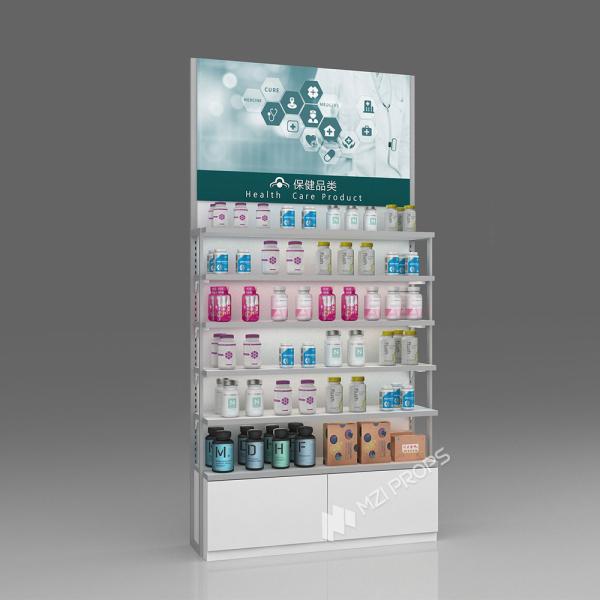Location
Successful pharmacies are often located in high-traffic commercial areas or near residential neighborhoods to attract more potential customers. Choose locations such as shopping malls, busy streets, or community centers to ensure a steady flow of customers. Also, consider the competitive environment in the surrounding area to avoid overly fierce competition.
Business Model
Choose between a self-operated or franchise model, depending on resources and market conditions. For small businesses, a franchise model can lower initial investment risks but requires adherence to headquarters' guidelines. A self-operated model offers greater autonomy but requires more capital and management experience.
Target Customer Group
Clearly define the target customer group, such as seniors, young families, or patients with chronic conditions, and adjust the store's decor and product offerings accordingly. For example, use simple and professional colors and designs to attract seniors; offer high-quality children's medications to meet the needs of young families.
Marketing Strategies
Effective marketing strategies can increase store visibility and sales. Combine social media promotion with offline experiential activities to expand brand influence. Regularly host new product launches, health seminars, or member-exclusive events to increase customer loyalty. Collaborate with KOLs (Key Opinion Leaders) to broaden brand exposure.
Customer Service
Providing excellent customer service can increase customer loyalty, such as offering professional medication consultations and after-sales service. Quality service makes customers feel valued, promoting word-of-mouth. Establish a VIP membership program to offer exclusive benefits and services to loyal customers.
Store Maintenance
Keeping the store clean, well-maintained, and attractive builds customer confidence. Regularly check facilities and promptly repair or replace damaged equipment to maintain the store in optimal condition. Ensure that shelves, counters, and floors are always clean and tidy, creating a comfortable shopping environment.
Employee Training
Provide comprehensive training for employees, including product knowledge, sales techniques, and customer service. Ensure that every employee can provide professional and friendly service to customers. Regularly hold team-building activities to boost employee motivation and cohesion.
Data Analysis
Use POS systems and CRM (Customer Relationship Management) systems to collect and analyze sales data, understanding customer purchasing behavior and preferences. Adjust product assortments and marketing strategies based on data analysis results to improve operational efficiency. Regularly assess store performance, set clear goals, and develop improvement plans.
Continuous Innovation
Continuously introduce new products and technologies to maintain the store's competitiveness. For example, launch limited-edition products or exclusive collaborations to attract customer attention. Adopt the latest retail technologies, such as AR try-on mirrors or smart shelves, to enhance the shopping experience.
Community Engagement
Actively participate in community activities to build a positive brand image. For example, sponsor local health events, support charitable causes, or host public lectures. Through community engagement, strengthen the brand's positive image and social responsibility.
Case Study 1: Urban Comprehensive Pharmacy
Design Concept: Combine modern design with efficient operations to create a one-stop health service center.
Key Features:
Open shelves and clearly defined zones.
Professional pharmacist consultation area and health screening area.
Advanced POS systems and self-service kiosks.
Results:
Increased customer satisfaction and loyalty.
Higher sales and foot traffic.
Established a strong brand image.
Case Study 2: Community-Friendly Pharmacy
Design Concept: Focus on community-centric, convenient, and caring health services.
Key Features:
Warm and welcoming service attitude and a cozy in-store environment.
Dedicated elderly care and maternity and baby care areas.
Regular health lectures and community events.
Results:
Became a trusted health advisor for community residents.
Enhanced community cohesion and a sense of belonging.
Increased customer retention and positive word-of-mouth.
Case Study 3: Transformation of a Traditional Chain Pharmacy
Background: A traditional chain pharmacy aimed to enhance customer experience and trust through a redesign.
Improvements:
Redesigned store layout to increase openness and transparency.
Introduced a professional pharmacist team for personalized consultations.
Enhanced staff training to improve service levels.
Results:
Significant improvement in customer satisfaction.
Steady growth in sales.
Refreshed brand image.
Case Study 4: Innovative Practices in a High-End Pharmacy
Background: A high-end pharmacy sought to enhance the customer experience through innovation.
Innovative Measures:
Introduced high-tech equipment, such as smart medicine cabinets and virtual reality health experiences.
Provided customized health management plans and private health advisory services.
Hosted high-end health salons and VIP events.
Results:
Attracted a significant number of high-end customers.
Elevated the brand's market position.
Substantially increased customer loyalty.













































